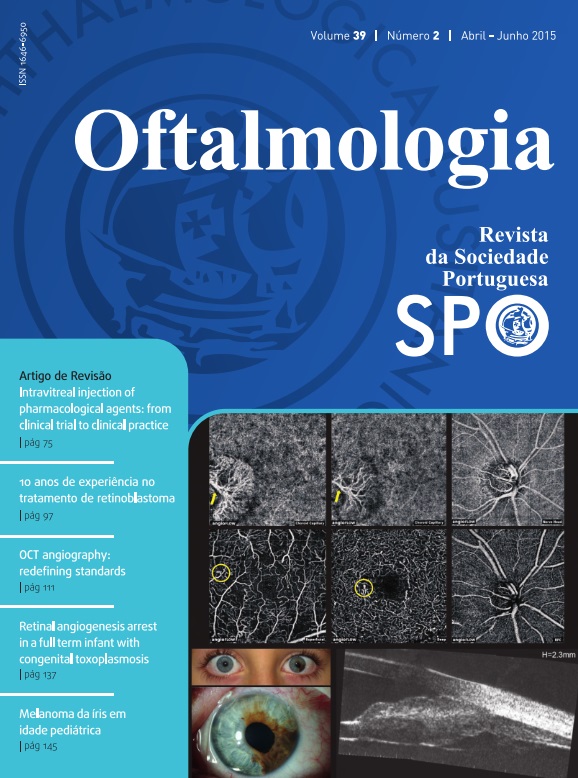Internal limiting membrane inverted flap technique: a new paradigm in large macular holes surgery
DOI:
https://doi.org/10.48560/rspo.7105Keywords:
internal limiting membrane, inverted flap technique, macular hole surgeryAbstract
Purpose: To evaluate the efficacy and safety of the internal limiting membrane (ILM) inverted flap technique (IFT) in large macular hole (MH) surgery.
Material and Methods: Retrospective analysis of eyes of patients with large MHs who underwent vitrectomy with ILM IFT between January 2013 and December 2014, with a minimum follow-up of 6 months. Myopic macular holes were excluded. We evaluated best-corrected visual acuity (BCVA), hole closure documented by OCT and complications.
We compared preoperative and postoperative values.
The Wilcoxon test was used for comparing BCVA (p <0.05).
Results: 17 eyes of 17 patients with a mean age of 63.24 years were studied. 76.5% of eyes had primary MHs, 11,8% post-vitrectomy and 11,8% post-traumatic. Mean minimum MH diameter was 578,5 ± 147μm and the mean MH duration was 35,9 months. According to lens status, 47,1% were phakic, 11,8% had cataract and 41,2% were pseudophakic. Concomitant cataract surgery was performed in 47,1% of cases.
At the mean follow-up of 7,76 months, closure rate was 100%, with BCVA improving from 1,20 ± 0,48 to 0,68 ± 0,36 logMar units. All patients improved BCVA, with 64,7% gaining two or more Snellen lines of BCVA. Complication rate was 5.6%.
Conclusions: ILM IFT is an effective and safe technique in MH surgery. In this study, with large MH, the anatomic success rate was 100% and BCVA improvement was significant.
Downloads
Downloads
Published
How to Cite
Issue
Section
License
Do not forget to download the Authorship responsibility statement/Authorization for Publication and Conflict of Interest.
The article can only be submitted with these two documents.
To obtain the Authorship responsibility statement/Authorization for Publication file, click here.
To obtain the Conflict of Interest file (ICMJE template), click here





